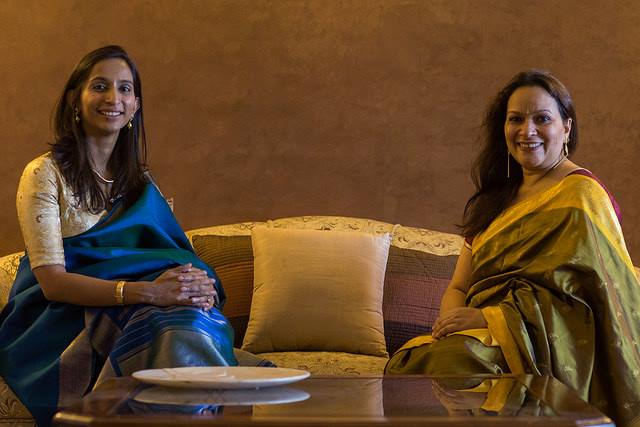I visited Kanchipuram with my family
Kanchipuram is a town of contradictions. Here, sarees worth lakhs of rupees are woven and it has seen prosperity. Your ubiquitous supermarket grocery store is here, as are every phone company selling the best deal on international calls.
But parts of the town are as if time stood still. Old world buildings, a vibrant flower market and the steady clickity clack of the looms.That sound is never far, no matter where you stand in the town.
Years ago, I visited Kanchipuram with my family. As an outsider, one would probably get totally harassed by the touts waiting to take you to see “piyore Kanchi Saree, Maydum “. But if you ignore them and keep looking in the bylanes, it isn’t hard to spot a loom.
A lot of power looms also have one or two hand looms housed in the same facility. Economics and hardship have accelerated change & innovation for those who could afford it. It takes three days to weave a saree on a power loom. Sometimes even a month on a hand loom. And, yet, a lone hand loom will stand testimony to the skill, talent and hours spent by the residents of this town, to weave a saree that someone wears today with pride ( I hope).
On my visit there I saw the entire process of a saree production and sale. Where silk comes from, how it is made into thread, the thread then dyed to the colours required, then put on to spindles, only to be stretched again on the loom for the warp and the weft. Zari, whispers of gold, that find their way into the weave to enhance the Kanjeevaram saree border and pallu. Then the meticulous checking of each saree, cutting the extra threads and the folding of the cloth to be taken to the cooperative which will in turn sell it to retail. The weavers get paid no more than 500 rupees for their work. Sometimes less. The saree sells between a range of 5000 to 20,000 rupees each (this is your very regular( read ordinary ) Kanjeevaram range). That is a neat profit of many hundreds percent.
Whether hand loom or power loom, until there is a mechanism to get the saree straight to the buyer, with fewer middle men and women, this skewed remuneration will continue.
But what a content lot of people I met. It’s hard being a weaver, still, they take pride in what they do. They recognise it is a dying art. Their sons and daughters don’t want to continue the tradition. But there is hope in their eyes nevertheless. Hope that the government, the retailers and the end wearer will realise that in each thread that they have woven lies skill that is unparalleled.
Most of us would pay a king’s ransom to have the latest artist’s canvas up on our walls to showcase our success. Then why do we haggle with the shops or the weaver, when we stumble upon one, for a saree that is six meters of art, history, skill, story-telling,tradition,design and talent, right there ?
We need to recognise the worth of what we wear.
saree # 50 A piyore, Kanchi, handwoven, gorgeous, green and mustard, silk for #100sareepact
I promise to take a better shot of the saree and the pallu the next time. These were photos we were taking in a hurry to send out…

